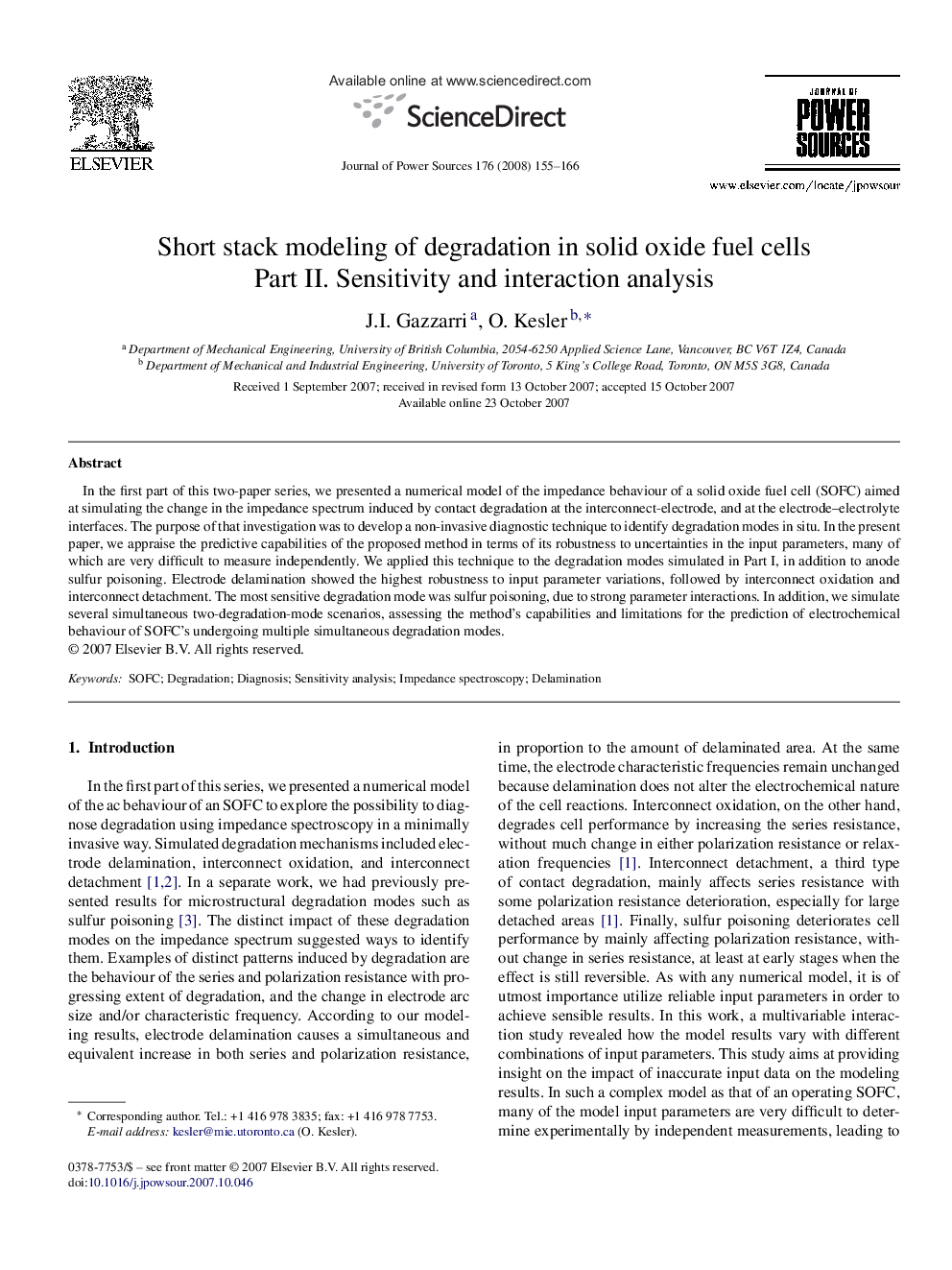| Article ID | Journal | Published Year | Pages | File Type |
|---|---|---|---|---|
| 1285880 | Journal of Power Sources | 2008 | 12 Pages |
In the first part of this two-paper series, we presented a numerical model of the impedance behaviour of a solid oxide fuel cell (SOFC) aimed at simulating the change in the impedance spectrum induced by contact degradation at the interconnect-electrode, and at the electrode–electrolyte interfaces. The purpose of that investigation was to develop a non-invasive diagnostic technique to identify degradation modes in situ. In the present paper, we appraise the predictive capabilities of the proposed method in terms of its robustness to uncertainties in the input parameters, many of which are very difficult to measure independently. We applied this technique to the degradation modes simulated in Part I, in addition to anode sulfur poisoning. Electrode delamination showed the highest robustness to input parameter variations, followed by interconnect oxidation and interconnect detachment. The most sensitive degradation mode was sulfur poisoning, due to strong parameter interactions. In addition, we simulate several simultaneous two-degradation-mode scenarios, assessing the method's capabilities and limitations for the prediction of electrochemical behaviour of SOFC's undergoing multiple simultaneous degradation modes.
